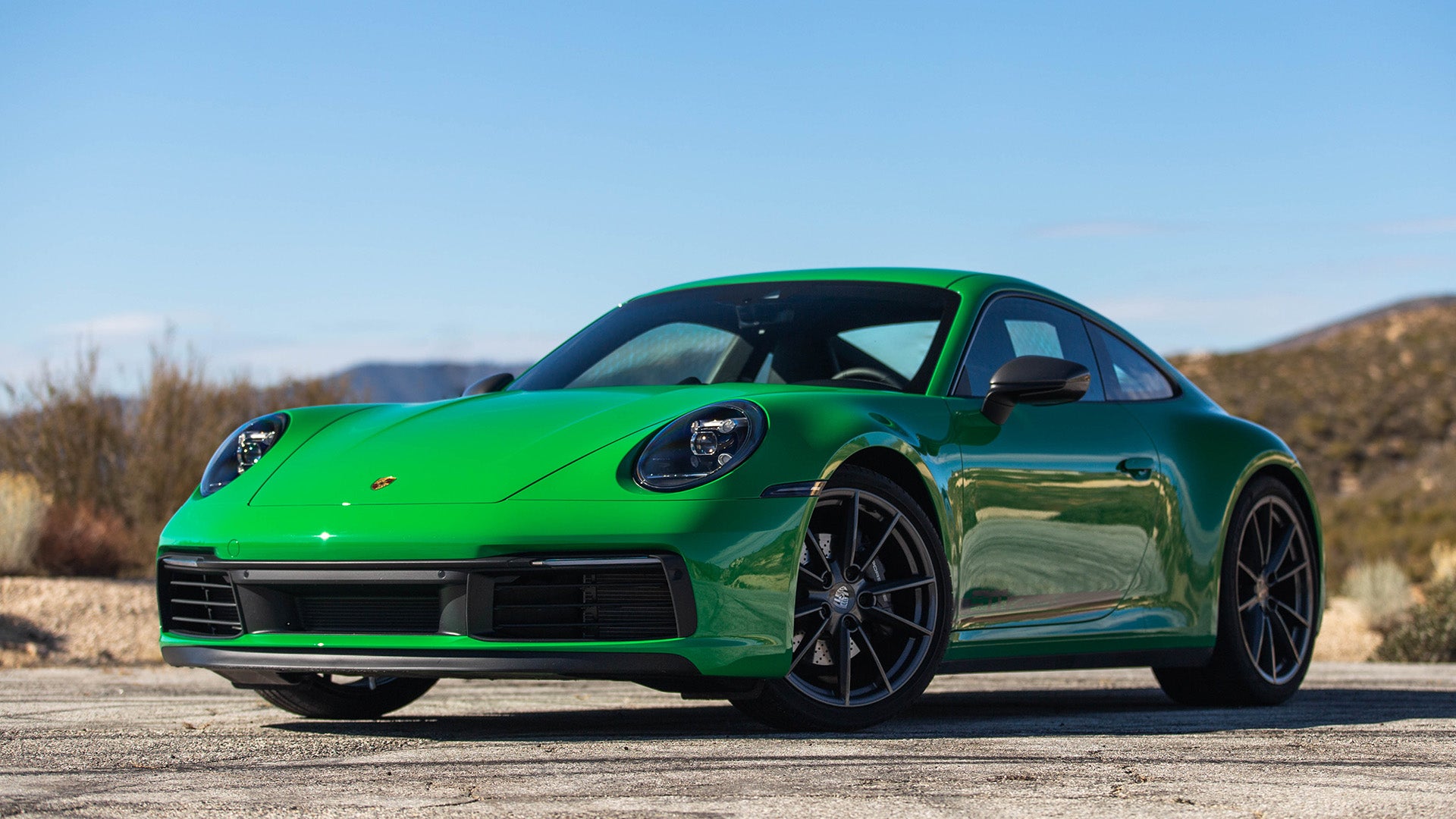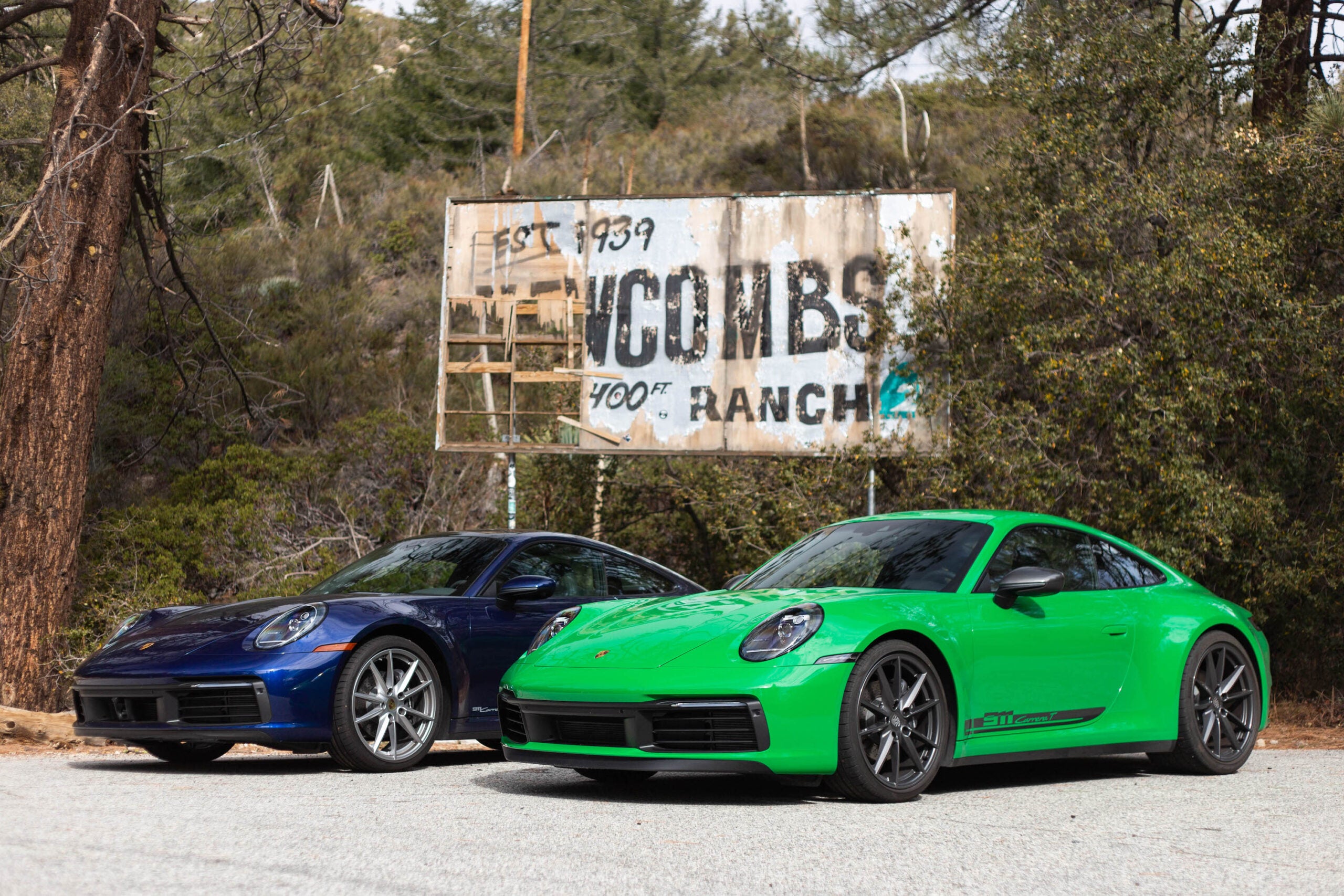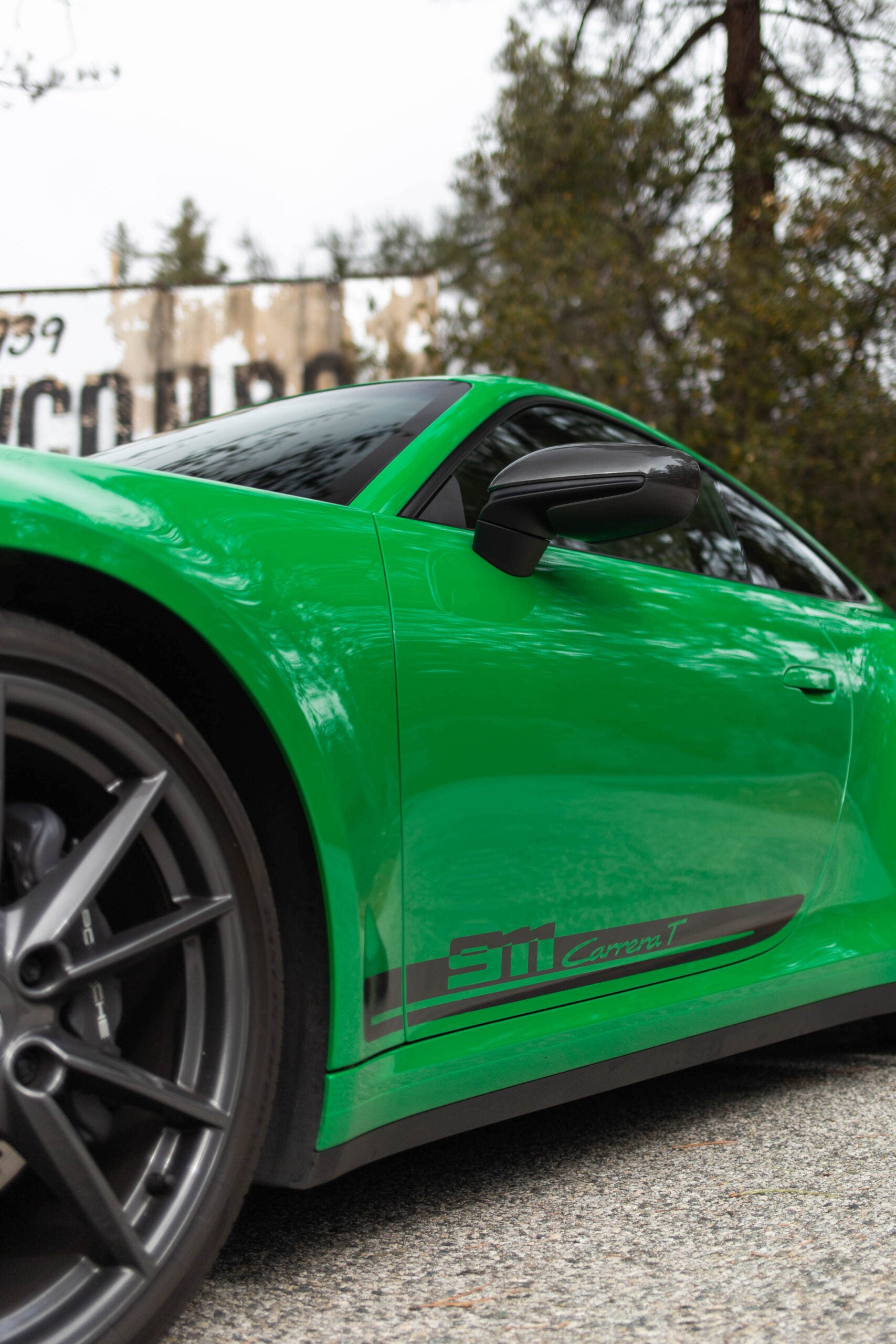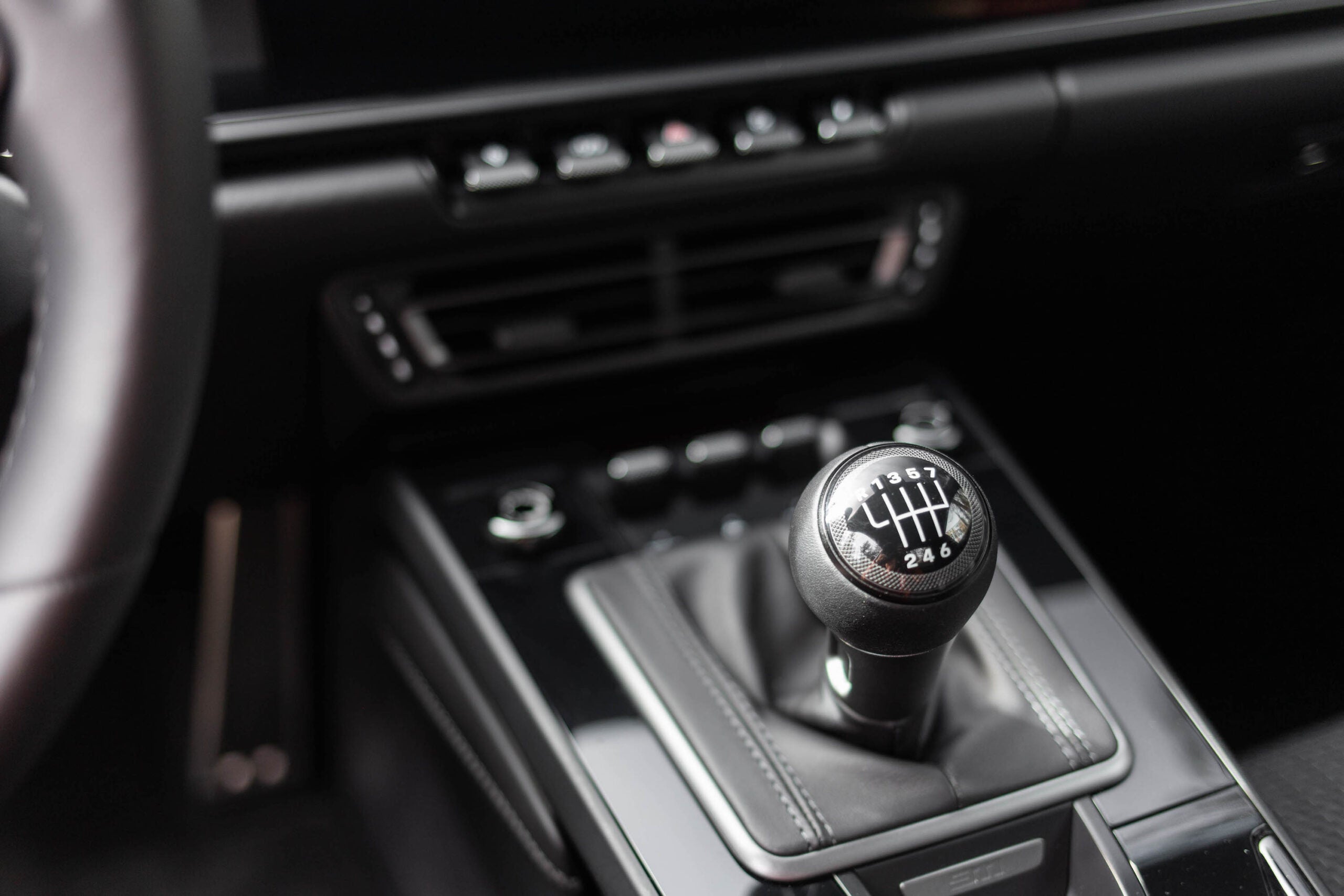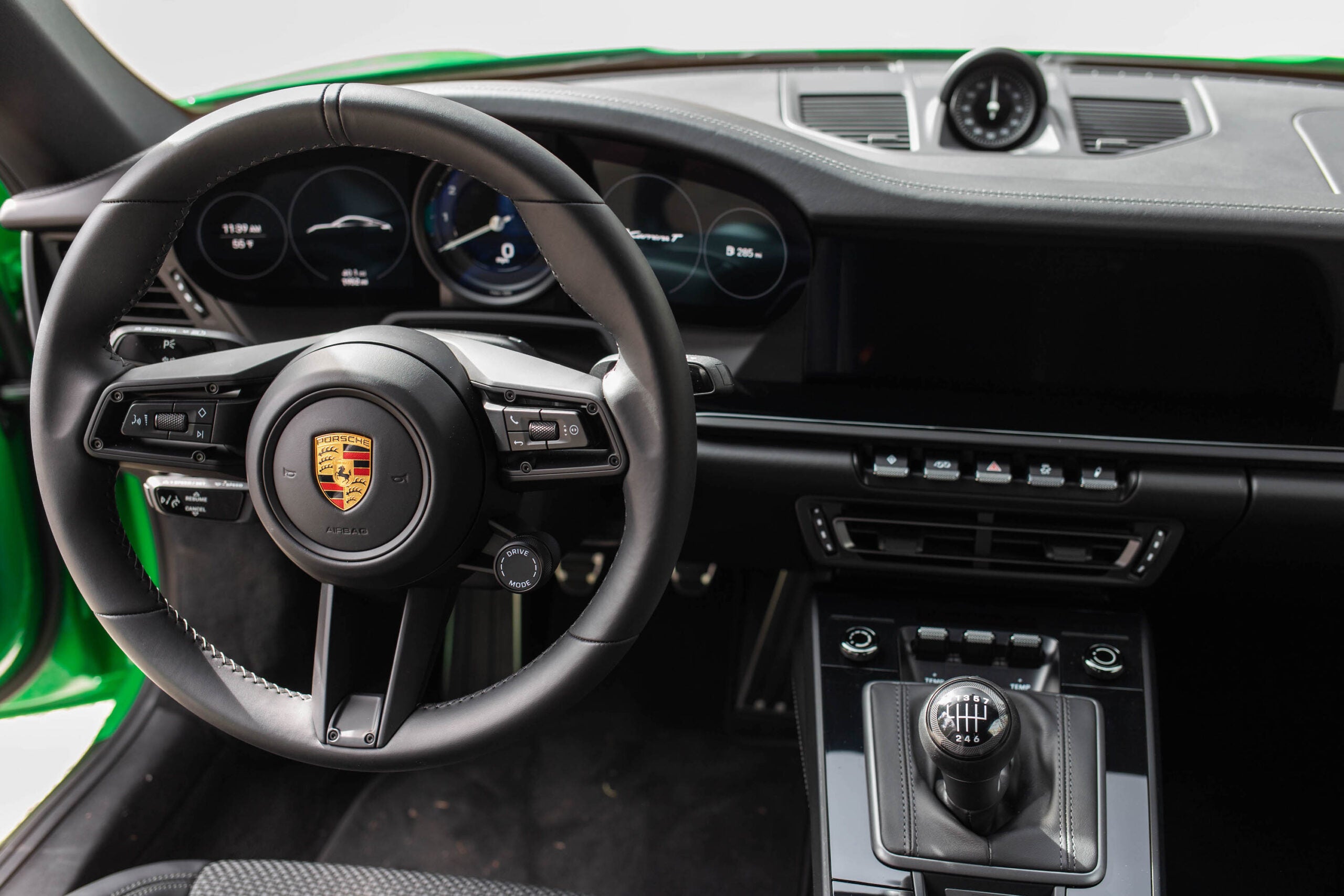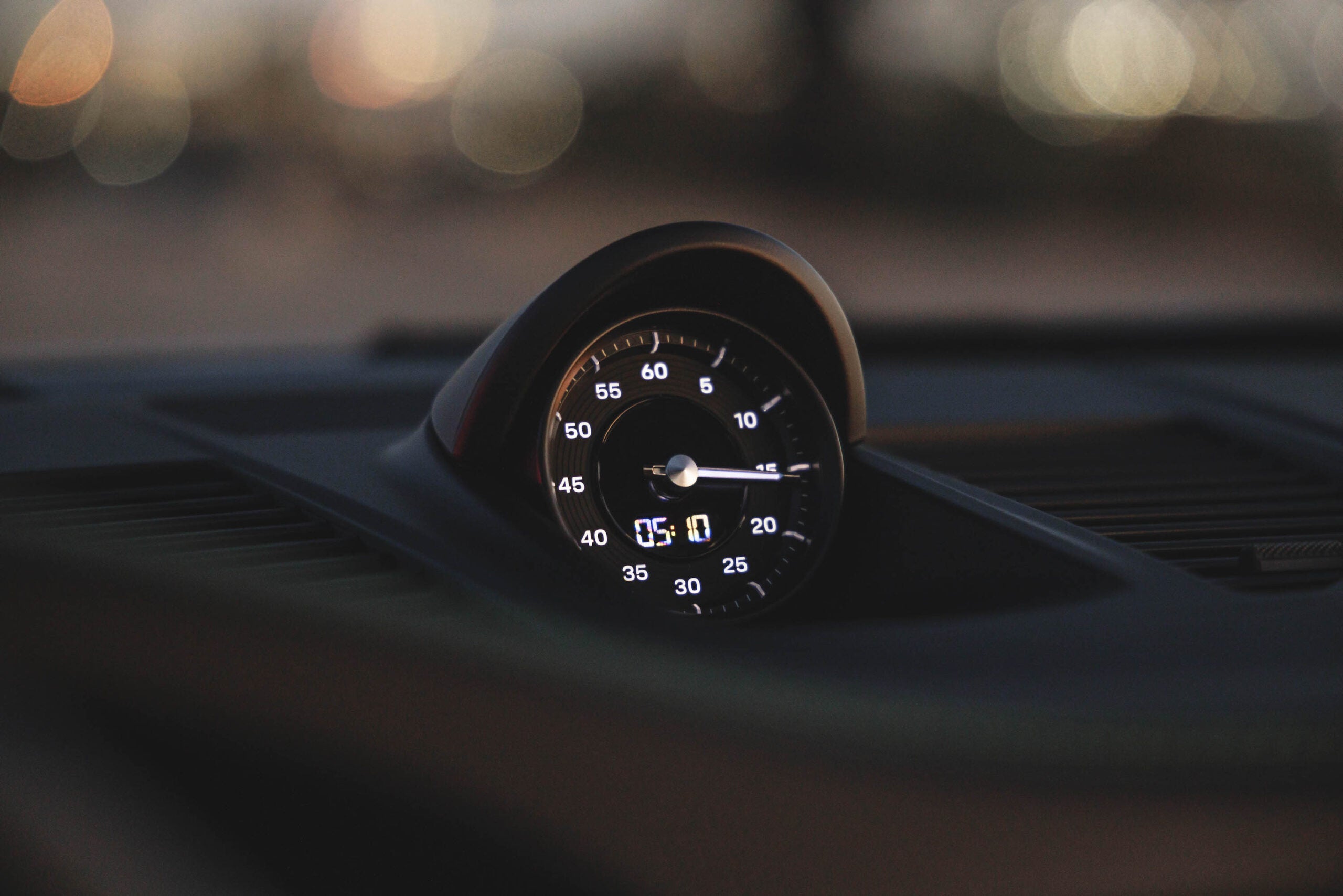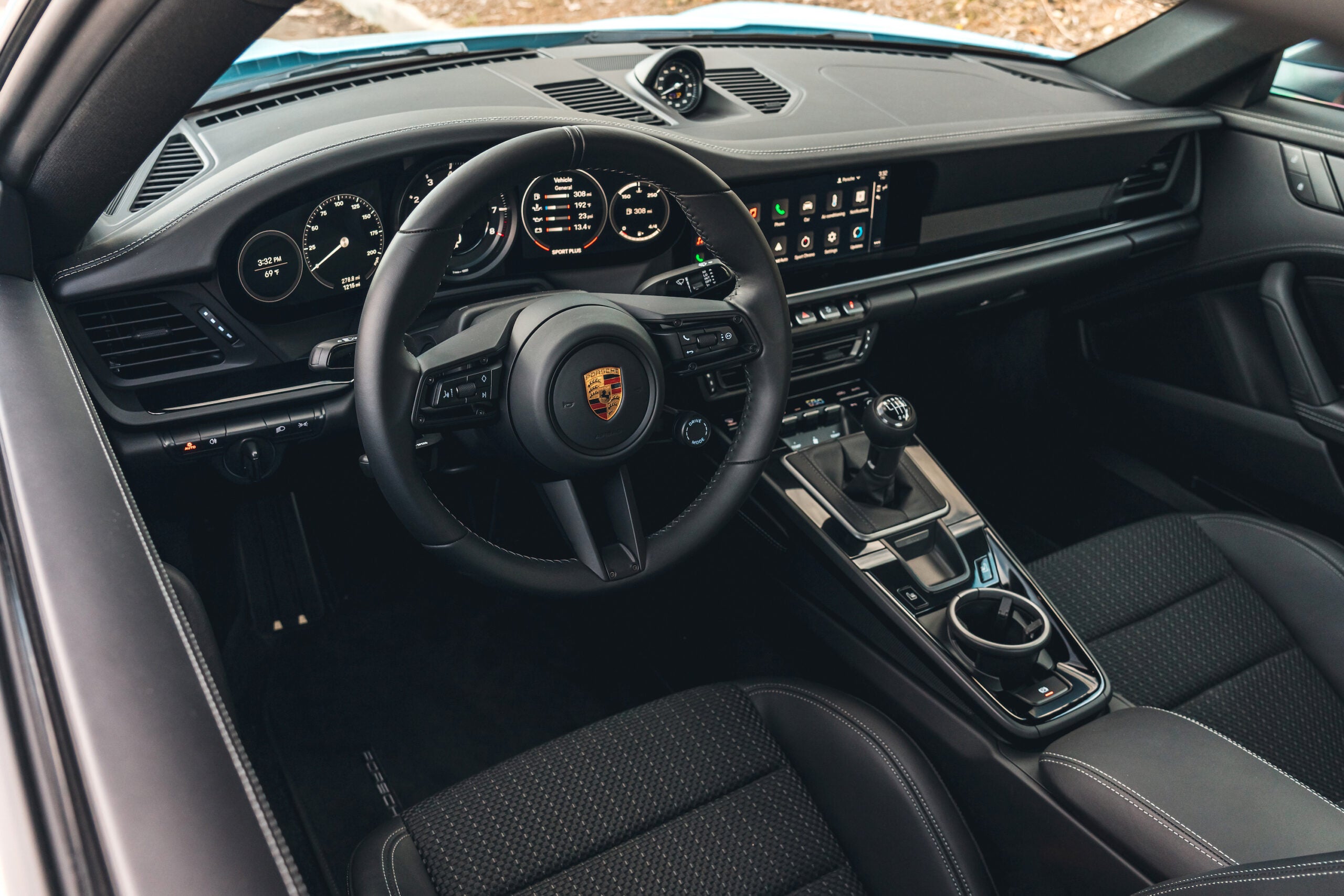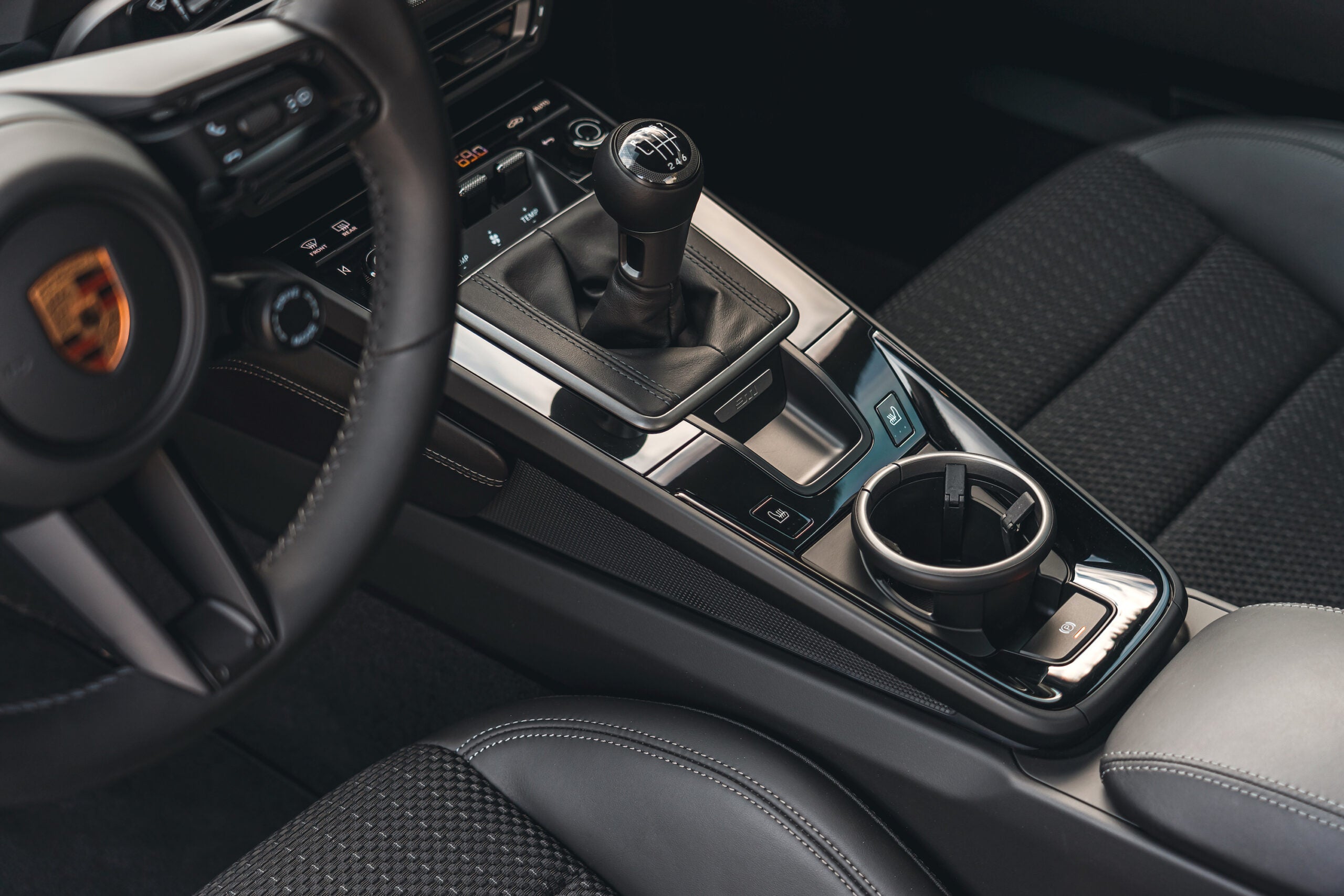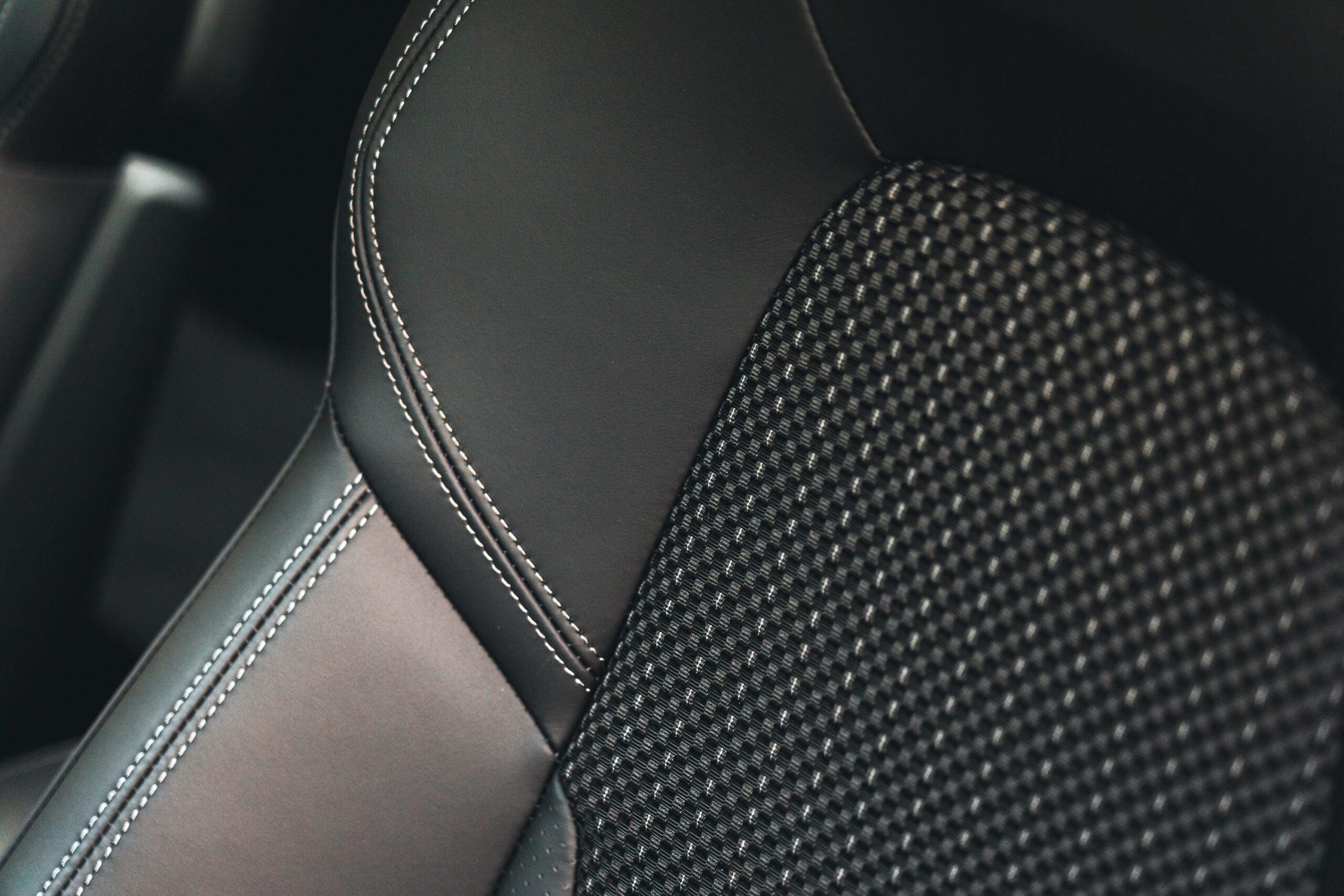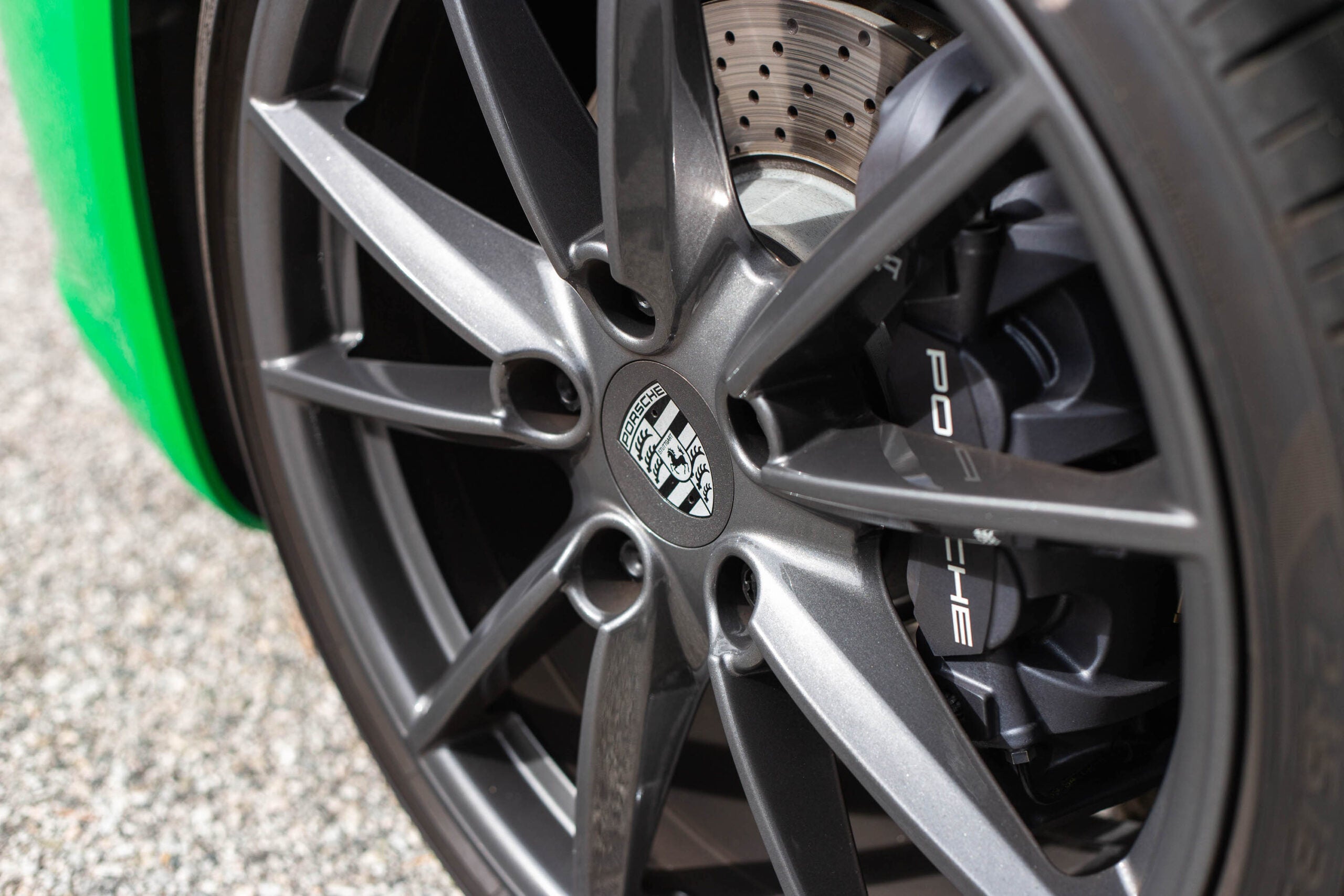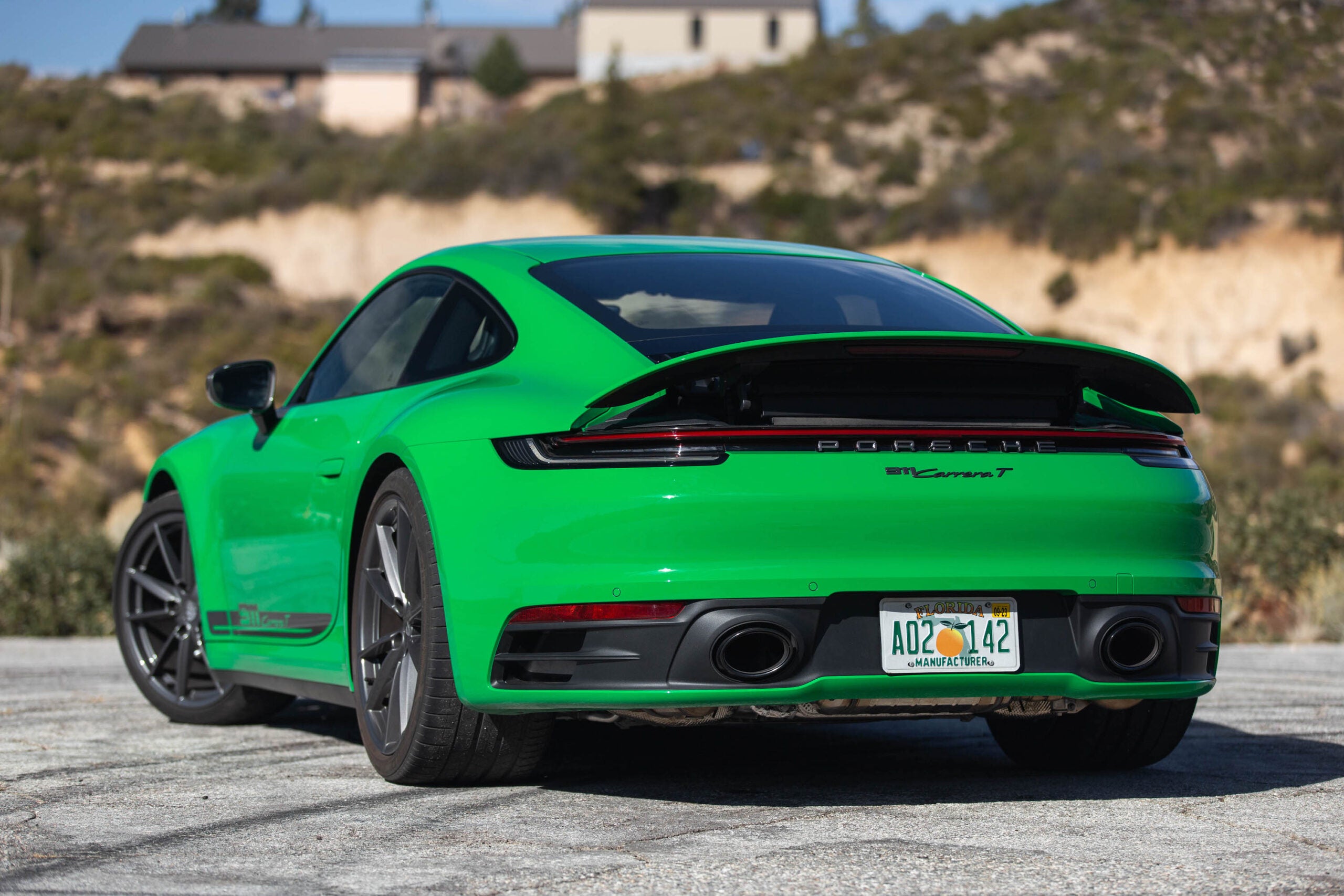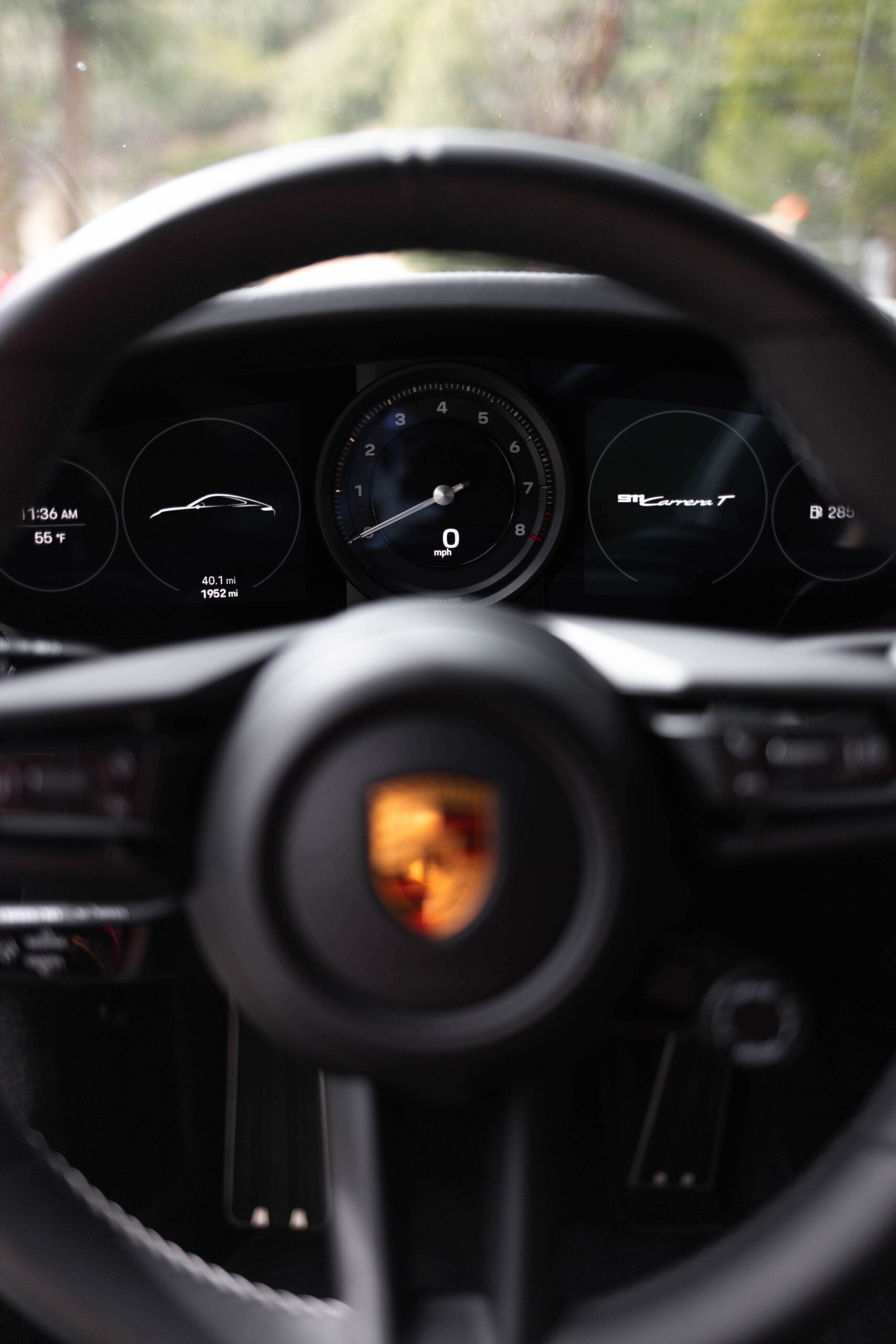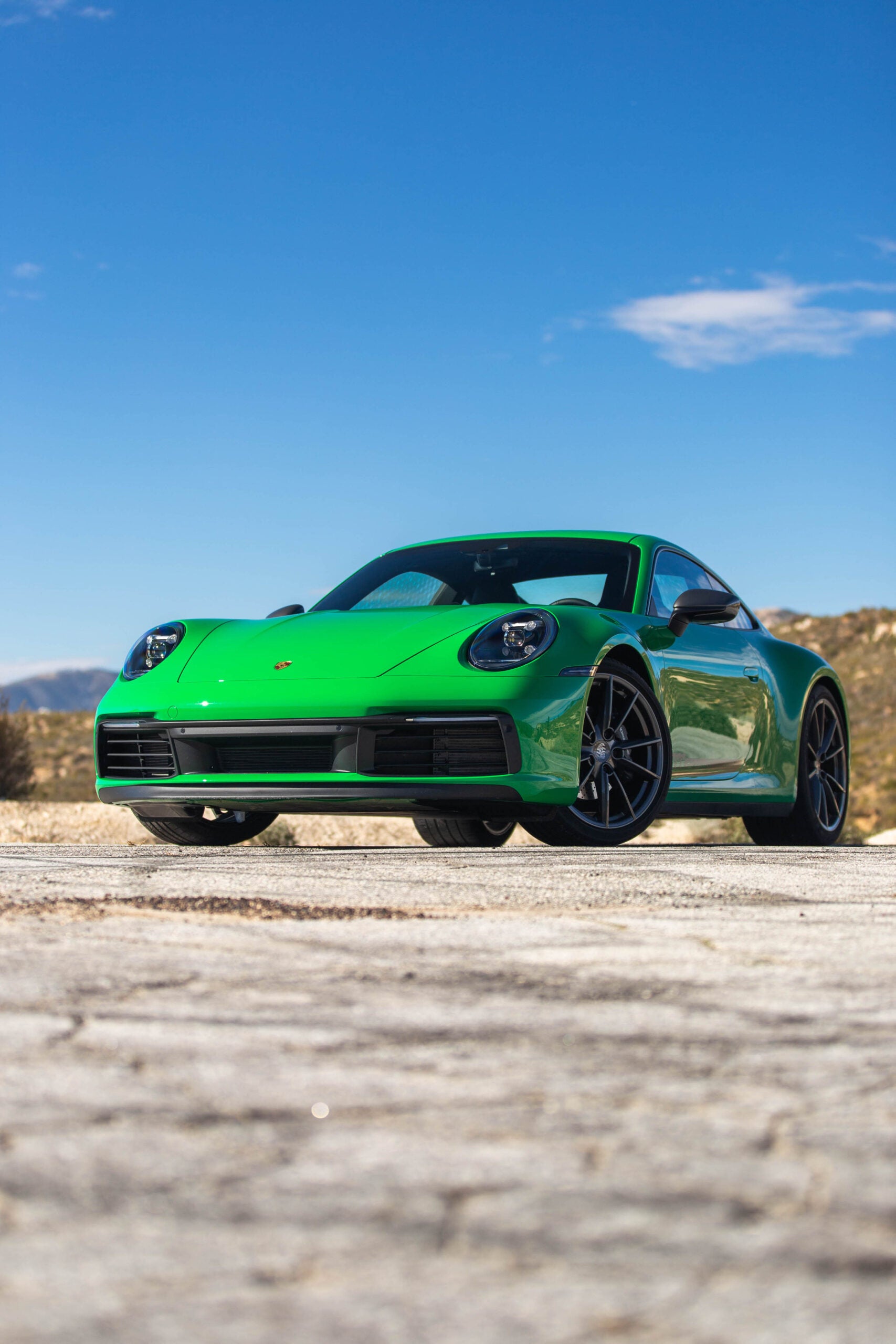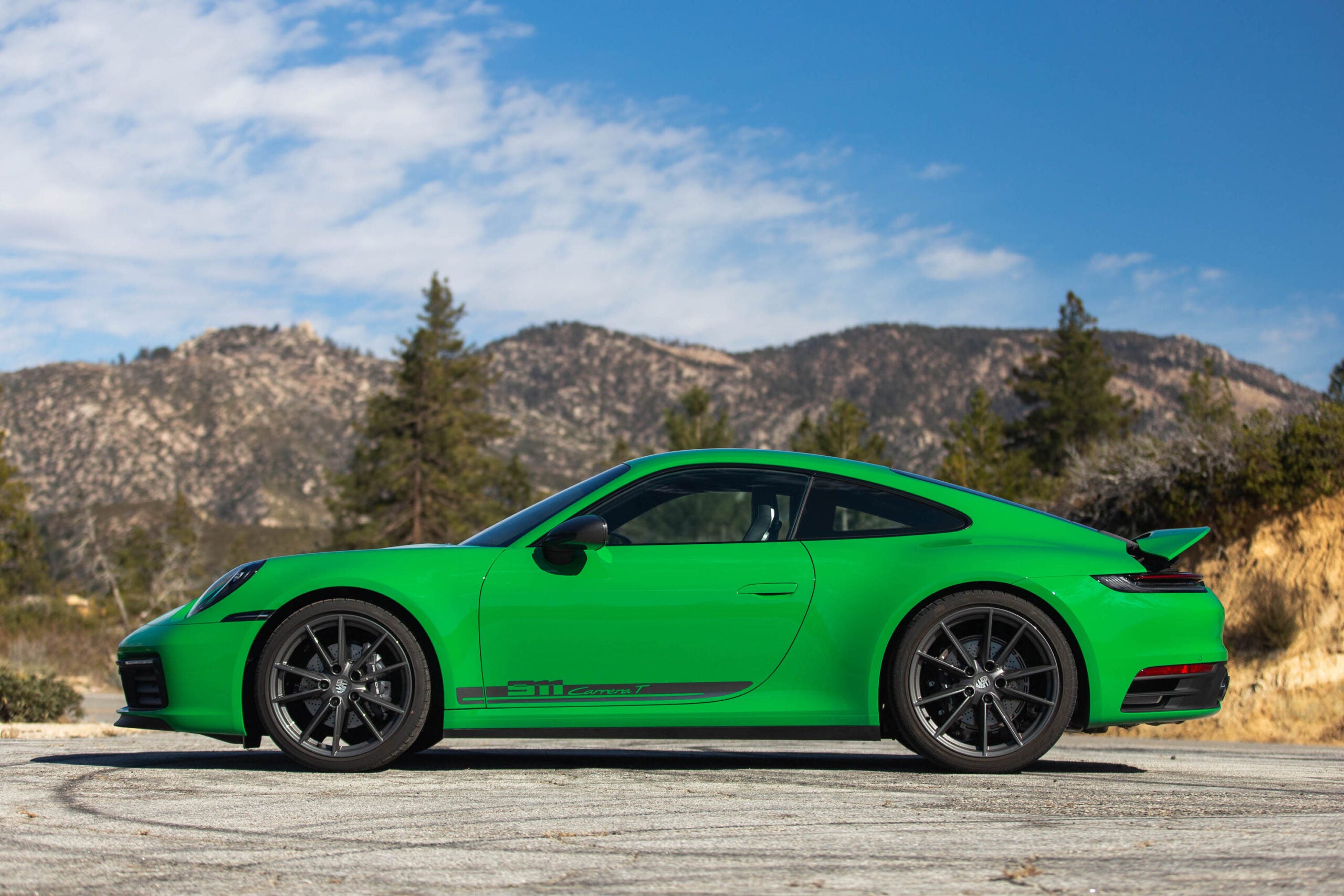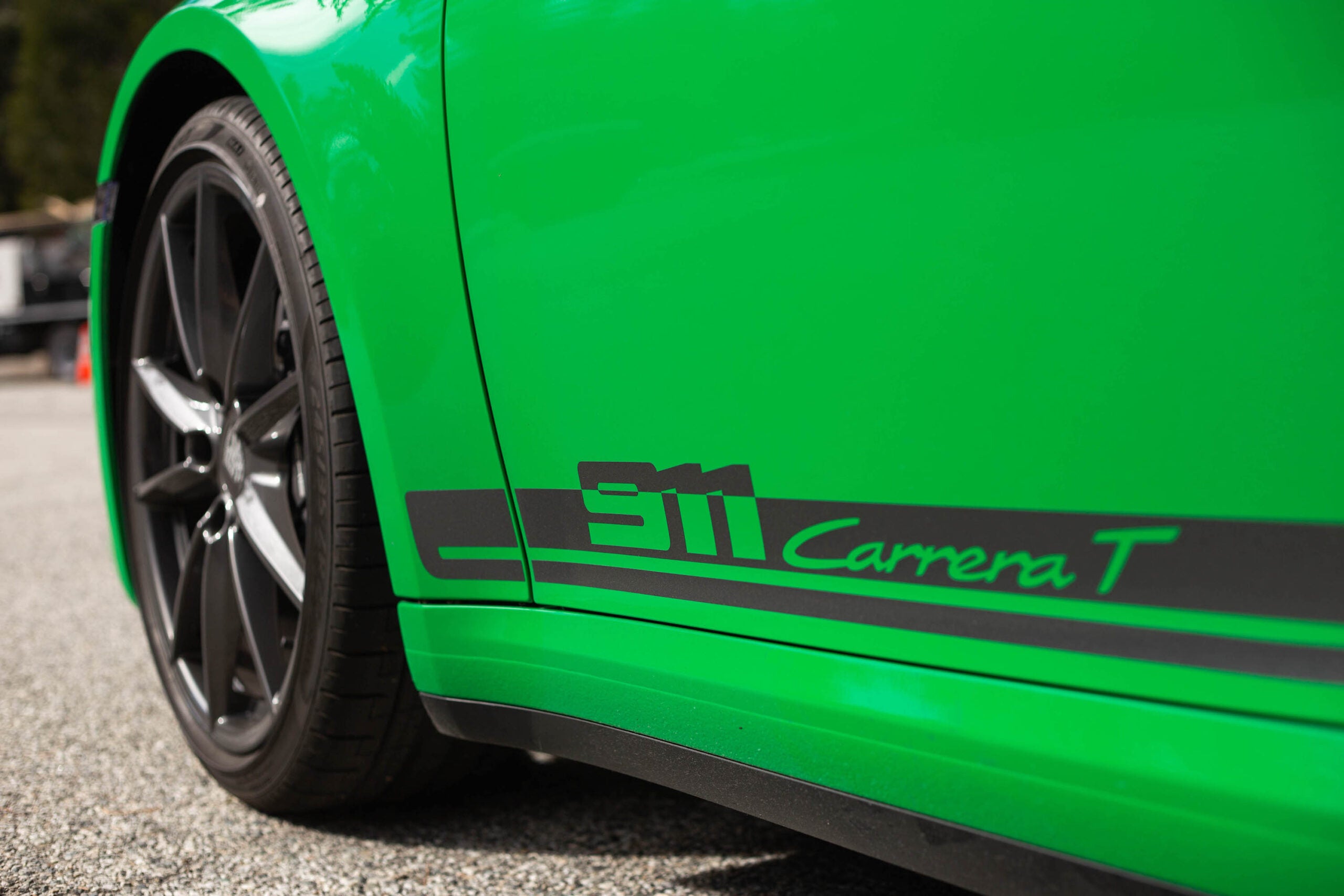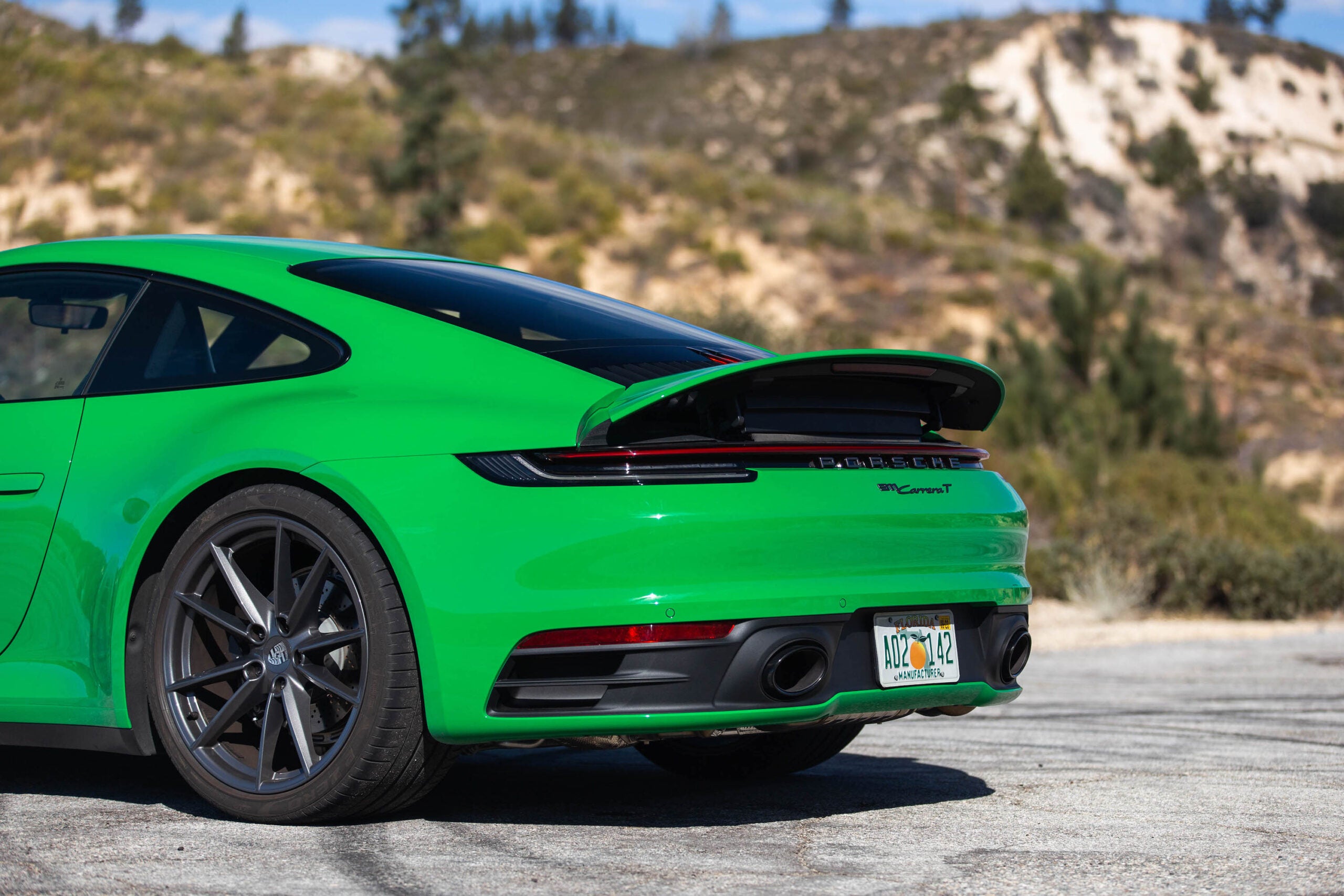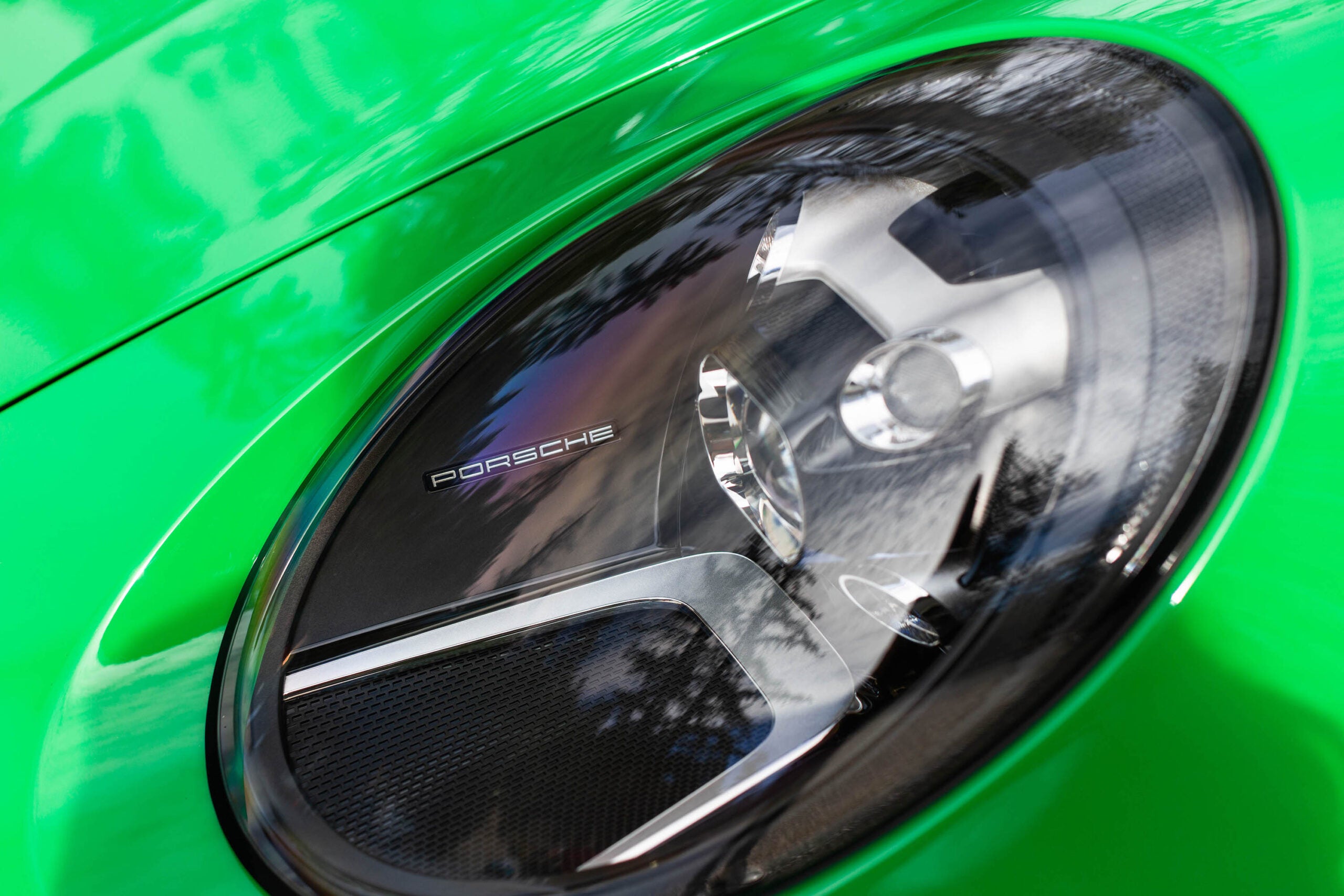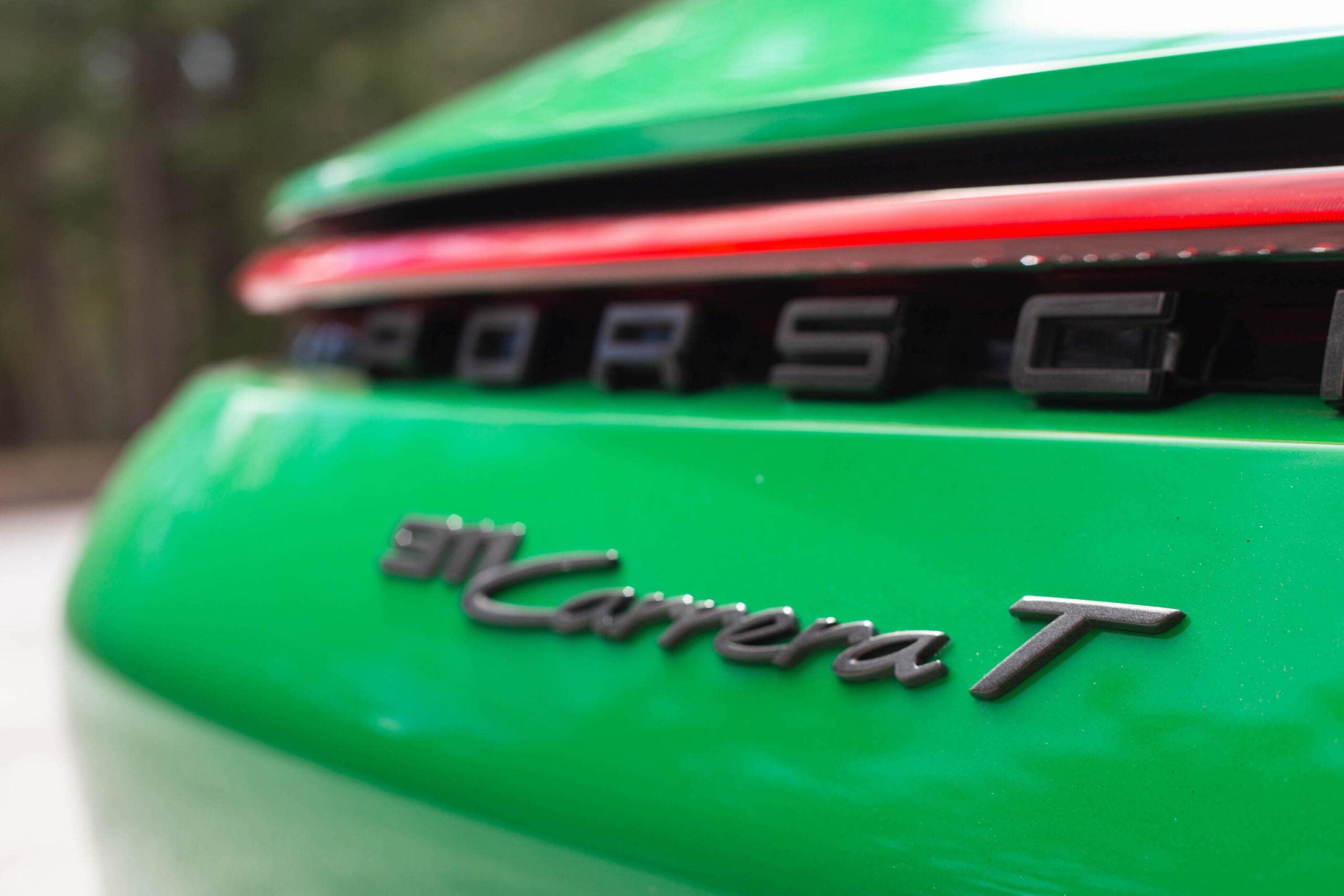If anyone’s the master at perfectly segmenting how much car you pay for into exactly how much car you receive, it’s Porsche. There are already more 911 models than I can count, but within the 911 Carrera family itself, there is an additional throng of models to choose from, one for every budget and need. The 2023 Porsche 911 Carrera T is the latest to join the 992-gen 911s and it’s the one for spirited, engaging driving. Well, a touch more so than the others.
The T is how I’d option a sports car. It’s not about adding more power, it’s about what you can take out. Cars will always obey the laws of physics, and physics dictates that if you make a car lighter, it will generally handle better.
Kristen Lee
Anyone who isn’t specifically honed into the most intimate knowledge of Porsche’s 911 Carrera hierarchy might have difficulty sussing out what makes the T unique among its brethren (hey, it’s what I’m here for!), but that’s okay. This isn’t one of those cars whose existence is defined by shouty performance for the sake of everyone else. This one’s for you, the driver looking for some thrills but who also doesn’t want to completely break the bank.
2023 Porsche 911 Carrera T Review Specs
- Base price (as tested): $118,050 ($128,530)
- Powertrain: 3.0-liter twin-turbo flat-six | 7-speed manual or 8-speed PDK | rear-wheel drive
- Horsepower: 379 @ 6,500 rpm
- Torque: 331 lb-ft @ 1,900 to 5,000 rpm
-
Curb weight
- Manual: 3,254 pounds
- PDK: 3,338 pounds
- Seating capacity: 2 (can be optioned for 4)
-
0-60 mph
- Manual: 4.3 seconds
- PDK: 3.8 seconds
- Top speed: 181 mph
- Cargo volume: 4.66 cubic feet (front trunk)
- EPA fuel economy: TBD
- Quick take: This is the 911 model that’s about driving pleasure, not speed or power—though, according to your trusty butt dyno, it can put down plenty of both.
- Score: 9/10
The “T” in the Carrera T’s name designates “Touring”—that is, models that come with lower-power engines but make up for it in agility, lightness, and handling. Thus far, there have been T versions of the previous-gen 911, the 718 Cayman, the 718 Boxster, the Macan SUV, and, now, the 992-gen 911; all trace their roots to the 1968 911 T touring car.
A 911 and the 911 T. Kristen Lee
Currently, the T sits between the base 911 and the S. And because you cannot option the base with the seven-speed manual (it’s only available on the more expensive, 443-horsepower S), the T is the only way you can get the base engine with three pedals. That base engine, by the way, is a 3.0-liter, twin-turbocharged flat-six that produces a claimed 379 hp and 311 lb-ft of torque. The eight-speed PDK is also available as a no-cost option, but I must ask: Why would you do that to yourself?
Other standard features include a rear-seat delete, sport exhaust system, reduced sound-deadening, thinner glass, a smaller battery, a mechanical limited-slip differential with torque-vectoring, the Sport Chrono Package, and PASM sport suspension that cuts down the ride height by 10mm.
Visual elements include staggered 20- and 21-inch front and rear Titanium Grey wheels from the Carrera S, black brake calipers, Agate Grey exterior details, gloss-black tailpipes, four-way Sport Seats Plus, the GT Sport steering wheel, and piano-black trim.
Kristen Lee
Kristen Lee
Porsche
By far, the most attractive option is the rear-axle steering, and you can also ask for the 18-way Adaptive Sport Seats Plus or the Full Bucket Seats. Additionally, you may option the rear seats back in, but again, I have to inquire: Why?
All told, the seven-speed, rear-seat-deleted T saves 100 pounds over the PDK-fitted base 911 for a curb weight of 3,254 pounds. With a PDK, the T weighs 3,338—or a mere 16 pounds less than the PDK-fitted base 911.
Getting into the Carrera T is a familiar event, all the way down to its left-hand ignition. The clutch is on the heavier side but forgiving once you get the hang of it; the gear lever slots into the housings with satisfying heft and weight. Flip on the sport exhaust button—which, at this point, ought to be a reflex—roll off the clutch, give it a pinch of gas, and you’re off.
Kristen Lee
Things are certainly louder. Thanks to the thinner glass and lack of noise reduction, you can hear the tires sing louder, the wind roar harder, the engine rasp more raucously. There’s never a question as to which gear you’re slotting into, the housings are that well-machined. The skinny GT Sport steering wheel both fits in the hand delightfully and provides fantastic insight into what the front wheels are up to, and the smallest tug is answered via a resulting wiggle in the nose.
Put the car into Sport Plus mode and everything gets expectedly more responsive. The ride, already fairly stiff, reads even more into the pavement. Sic the Carrera T onto the Angeles Crest Highway and it ravishes the turns and hairpin bends with a ravenous gusto. You’ll not be wanting for the extra power at all; the car is more than quick enough with its existing output, matched perfectly with what the steering, chassis, and grip are able to handle. Bang on the gas in an open smear of highway, and the sensation through the throttle pedal is one where you could very well be physically pushing the gas into the cylinders, the engine’s echoey flat-six note howling louder and louder with each rev flung past. What’s turbo lag?
The Carrera S might beat the T in terms of straight-line speed, but this is the one to choose if you value road dexterity over power. It snaps in and out of corners with a dancer-like alacrity, each maneuver a part of a well-rehearsed choreography that forces you to ask the car if it’s practiced this a thousand times before. The brake pedal could use a skosh more bite in the topmost inch of pedal travel, but otherwise, every hair of input feels like it translates one-to-one to a real-world response.
Kristen Lee
But as is the case with every single 911 I’ve ever driven, I did not get the sense the car performed any of these things with a smile on its face. It’s a very serious machine that’s superb at its job—at every job you throw at it, for that matter—yet, the light-footedness did not carry over to lightheartedness. The car is not silly, nor does it let its hair down. Not like the Hyundai Veloster N or Honda Civic Si do, anyway. I know that sounds foolish, to compare two economy sports cars with a goddamned Porsche 911. But driving fun is driving fun, and it transcends earthly things like price. This is not an objective mark against the Carrera T, it’s just one of those tricky subjective measures.
Speaking of tricky, here’s the other big thing the Carrera T will have to face down: If you blindfolded me (metaphorically, of course) and sent me out in it, I would be extremely hard-pressed to tell you exactly how differently it feels from the other 911 Carreras hanging out in its orbit. If how I’ve described the T to drive sounds mighty like the way all other 911s drive, that’s because it does. Back to back, perhaps I would have been able to more acutely feel out the difference in power between a seven-speed Carrera S and the Carrera T, or how that 100 pounds in weight-savings translates above a base PDK Carrera. But seeing as neither of those cars were present, I can merely tell you that the Carrera T pirouettes as well as the rest of them do, and that its more basic interior is great at not distracting you from the primary goal at hand, which is to make you feel like an absolute superhero on a twisty mountain road.
The Carrera T starts at $118,050 and you could argue that is a lot for a car with its rear seats missing. But, again, this puts it neatly between the $107,550 base Carrera and $124,450 Carrera S. My conspiracy theory brain wonders if Porsche purposely did not offer the base 992 with the stick just so it could sell it with the more expensive T, but I digress. The test car came painted in an absurd but awesome shade of Python Green ($3,270), had the leather package with slate gray stitching interior ($6,930), and Power Steering Plus ($280). Total vehicle MSRP came to $128,530.
Kristen Lee
With its engine and transmission option, the 911 T is a bit incongruous when it comes to the typical horde of 911 competitors, such as the Acura NSX, Audi R8, BMW M4, and Nissan GT-R. Those cars are all more powerful and mostly without clutch pedals. The best place to look for a Carrera T rival, then, is within Porsche.
The 718 Cayman S, with its mid-mounted 300-hp turbocharged flat-four, is also available with a manual. Though it’s missing two cylinders, it’s a wonderful package that starts at $76,850. Then, even better, there’s the 718 Cayman GTS 4.0, which gains two cylinders in the form of a godly mid-engined naturally aspirated 4.0-liter flat-six, also has a manual transmission, is good for a claimed 394 hp, and can be had with a starting price of $91,750. (I am a midship Porsche girl myself, always have, always will be, and I personally approve of these latter two options.)
But if you want a 911 that drives with the flickiness awarded to a slightly lighter body and don’t want to pay GTS prices, this is your car. With it, Porsche’s taken away the things that don’t matter—around 60 hp, back seats, body weight—and added in the things that do. Row your own gears to your heart’s delight, because in the 2023 Porsche 911 Carrera T, you’ve got a dance partner for life.
Kristen Lee
Kristen Lee
Got a burning 911 take to share? Holla at me: [email protected]
